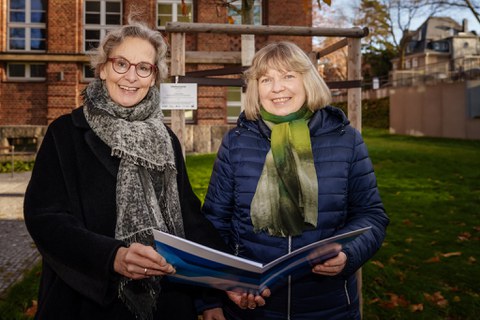Tree sponsorship Dr. Undine Krätzig Sweet Chestnut
- Scientific name
- Castanea sativa
- Planting
- 2022
- Tree sponsor
-
Dr. Undine KrätzigDirector of Student Affairs and Continuing Education
- Handed over on
- Dec 12, 2023
In appreciation of their merits as chancellor of TU Dresden during the terms 2006 to 2007, 2014 to 2016, and 2022 to 2023, Dr. Undine Krätzig received a tree sponsorship, donated by the members of the Extended University Executive Board of Technische Universität Dresden.
Location
Did you know?
The sweet chestnut (Castanea sativa) is a 15 to 20 metre high deciduous tree with a broad spreading crown. It is a tree species in summer-dry mixed deciduous forests. Larger stands of sweet chestnuts, which are mostly found individually, can only be found in Germany in the Black Forest, Odenwald, Palatinate and along the Moselle, Saar and Nahe rivers. It is assumed that the Romans introduced them to these warm summer regions along with the vineyards.
In our latitudes, the trees are usually only around 200 years old, south of the Alps up to 1000 years. The German name Kastanie is derived from the Latin castanea. However, the sweet chestnut is not closely related to the common horse chestnut.
The male flowers of the sweet chestnut are particularly rich in nectar and also provide large quantities of pollen. The main pollinators are bumblebees, bees, flies and beetles. Large stocks are sufficient for a pure sweet chestnut honey. This chestnut honey has a particularly high proportion of fructose. The sweet chestnut is also a source of pollen for wild bee species and a valuable butterfly food plant (caterpillar food).
The nutritious chestnuts are mainly spread by small mammals such as squirrels, mice and dormice as well as by crows and jays. The fruits contain a lot of carbohydrates, especially starch and sugar.

